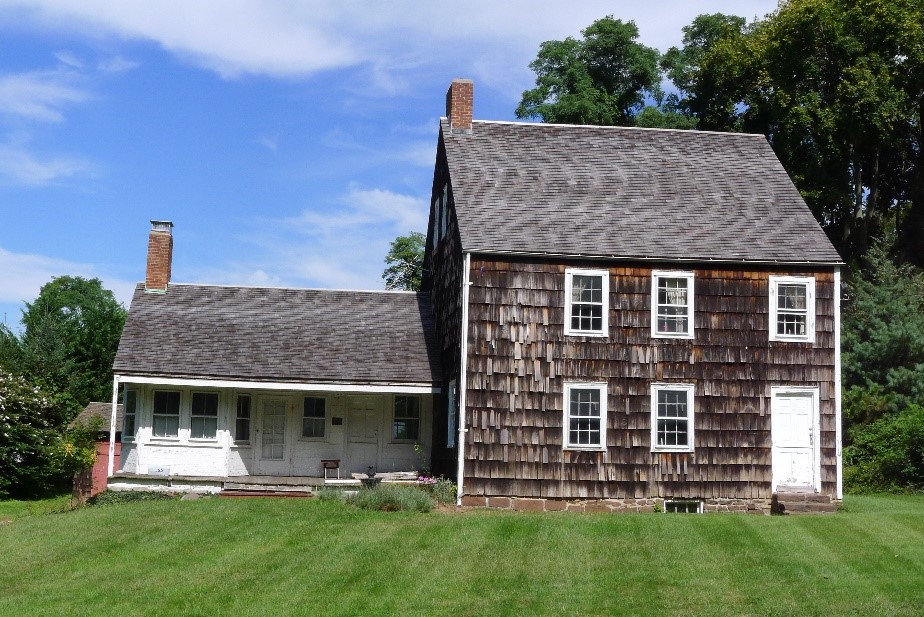
The Hawkins House or the Hawkins Homestead
The Hawkins Homestead is an excellent example of an early 19th century American farmhouse. With most of its structural elements intact – both inside and out – it gives us an appreciation of the skilled craftsmanship from a bygone era.
It was in the mid-1600’s that a young Zachariah Hawkins moved from the Massachusetts Bay Colony to the Three Village area. He would eventually become a successful farmer and large landowner and take an active role in civic affairs.
The small saltbox portion of the house was likely constructed or moved here by an early descendent of Zachariah Hawkins sometime in the mid to late eighteenth century. Members of the Hawkins family would continue to live at this site well into the twentieth century.
The main two story structure dates from the Federalist period ( c.1800-1825) and preserves a remarkable number of consistent architectural features, including paneled doors with hand wrought hinges, hand chiseled chair rails, crafted mantles and detailed trim work. Just a few of the other noted aspects of the home are its front Dutch doors, plaster walls and ceilings, large hand hewed beams which are pegged and interlocking, wide planked floors and large root cellar.
It is indeed rare to see two clearly different architectural styles, from two different centuries, incorporated into a single home. Not too long ago, the house was vacant and neglected, leading to a period of rapid deterioration both inside and out. A leaking roof, worn out wood shingles, and animal intrusions threatened the future of this unique building.
This iconic landmark was saved through generous grants obtained by New York State Assemblyman Steven Englebright, the efforts of the Three Village Community Trust, the generosity of the Three Village community and the work of a host of dedicated volunteers.
Today, under the care and leadership of the Three Village Community Trust, the wood roof and siding have been replaced, the porches rebuilt, and a new electrical, plumbing and heating system installed. While much more work needs to be done, the Hawkins house has slowly been reborn for its next two centuries.
